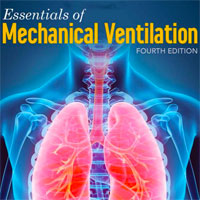Tag: ventilation
Noninvasive Ventilation in Pneumonia-induced Early Stage Mild ARDS
Treatment with noninvasive ventilation (NIV) did not reduce the need for intubation among patients with pneumonia-induced early mild acute respiratory distress syndrome (ARDS), despite the improved PaO2/FIO2 observed with... read more
Diagnosis of Nonventilated Hospital-acquired Pneumonia
Nonventilated hospital-acquired pneumonia (NV-HAP) poses several barriers for diagnosis compared with VAP, and the available knowledge is limited. A call for further research in diagnosis of nonventilated HAP is urgent.... read more
Automated vs. Non-automated Weaning for Reducing Mechanical Ventilation Duration for Critically Ill
Automated systems may result in clinically meaningful reduced durations of weaning, ventilation and ICU stay. Overall, these systems appear to be safe and can be considered a reasonable approach in the management of ventilator... read more
Mechanical Ventilation-induced Diaphragm Atrophy Strongly Impacts Clinical Outcomes
Diaphragm atrophy developing during mechanical ventilation strongly impacts clinical outcomes. Targeting an inspiratory effort level similar to that of healthy subjects at rest might accelerate liberation from ventilation.... read more
Reversing Neuromuscular Blockade
Neuromuscular blocking drugs have for years enabled anesthesiologists beneficially to relax skeletal muscles to improve anesthetic management, increase safety and quality of tracheal intubation, and to provide favorable intraoperative... read more
Management of Cardiogenic Shock
Cardiogenic shock (CS) remains the most common cause of death in patients with acute myocardial infarction although mortality could be reduced from formerly ∼80% to 40–50%. In addition to percutaneous coronary intervention... read more
Ultrasound for Lung Monitoring of Ventilated Patients
In the intensive care unit, patient lung ultrasound provides accurate information on lung morphology with diagnostic and therapeutic relevance. It enables clinicians easy, rapid, and reliable evaluation of lung aeration and... read more
A Core Outcome Set for Critical Care Ventilation Trials
The main objective for this study was to obtain international consensus on a set of core outcome measures that should be recorded in all clinical trials of interventions intended to modify the duration of ventilation for... read more
Essentials of Mechanical Ventilation
The acclaimed application-based guide to adult mechanical ventilation, updated to reflect the latest topics and practice guidelines. This practical guide is written from the perspective of authors who have nearly 100 years'... read more

How Best to Set the Ventilator on Extracorporeal Membrane Lung Oxygenation
Mechanical ventilation and extracorporeal support are marginally integrated. The best environment for lung healing – complete lung collapse or protective ventilation strategy or fully open and immobile lung (all three conditions... read more
Core Outcome Measures for Critical Care Ventilation Trials
The main objective for this study was to obtain international consensus on a set of core outcome measures that should be recorded in all clinical trials of interventions intended to modify the duration of ventilation for... read more
Time-Course of Clinical Physiologic Variables in ARDS Patients Undergoing ECMO
In patients undergoing extracorporeal membrane oxygenation (ECMO) for acute respiratory distress syndrome (ARDS), it is unknown which clinical physiologic variables should be monitored to follow the evolution of lung injury... read more
Long-Term Outcome after Prolonged Mechanical Ventilation
Among patients receiving prolonged mechanical ventilation at an LTACH, 53.7% were detached from the ventilator at discharge and 1-year survival was 66.9%. Respiratory strength was well maintained, whereas peripheral strength... read more
Noninvasive Ventilation Through the Helmet Can Be Used For Early Mild and Moderate ARDS
Debating data have been published as regards the beneficial or deleterious effect of spontaneous breathing (SB) in comparison to controlled mechanical ventilation (CMV) during acute respiratory failure. Spontaneous breathing... read more
Association of Age With Short-term and Long-term Mortality Among Patients Discharged From ICUs in France
Results of this study suggest that aging was associated with an increased risk of mortality in the 3 years after hospital discharge that included an ICU admission, with a sharp increase in those 80 years and older. However,... read more
Diaphragm-protective Mechanical Ventilation
Diaphragm dysfunction is common in mechanically ventilated patients and predisposes them to prolonged ventilator dependence and poor clinical outcomes. Mechanical ventilation is a major cause of diaphragm dysfunction in these... read more
Optimizing Respiratory Management in Resource-limited Settings
This review focuses on the emerging body of literature regarding the management of acute respiratory failure (ARF) in low- and middle-income countries (LMICs). The aim is to abstract management principles that are of relevance... read more
Noninvasive ventilation for avoidance of reintubation in patients with various cough strength
The aim of this study was to assess whether prophylactic noninvasive ventilation (NIV) would benefit patients with various cough strengths.... read more
PERFECT Protocol: Volume-based Feeding in Ventilated Adults
Underfeeding in critical illness is common and associated with poor outcomes. Researchers in the UK designed a before-and-after study to evaluate the safety, efficacy and clinical outcomes associated with volume-based feeding... read more
Economic Evaluation of vv-ECMO for Severe ARDS
Venovenous extracorporeal membrane oxygenation (vv-ECMO) is increasingly being used to support patients with severe acute respiratory distress syndrome (ARDS), but its cost-effectiveness is unknown. The cost-utility of vv-ECMO... read more
High-flow Oxygen Through Nasal Cannula in Acute Hypoxemic Respiratory Failure
In patients with nonhypercapnic acute hypoxemic respiratory failure, treatment with high-flow oxygen, standard oxygen, or noninvasive ventilation did not result in significantly different intubation rates. There was a significant... read more
Applied Physiology at the Bedside: Volumetric Capnography
Volumetric capnography is the graphical representation of the partial pressure of carbon dioxide (CO2) versus exhaled volume. This measurement is made noninvasively at every breath by a combination of flow and CO2 sensors,... read more









